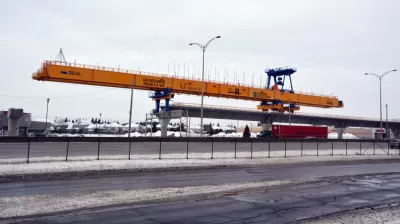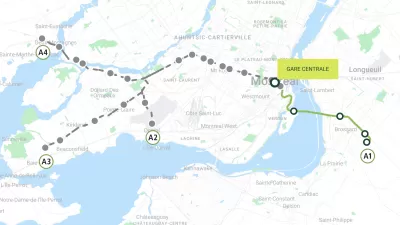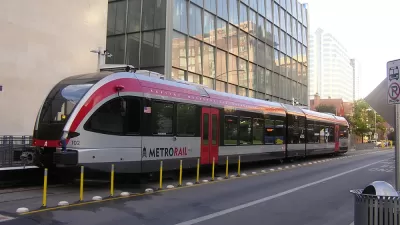Montreal officials recently announced details of a major expansion of the Réseau express métropolitain (REM).

"Montreal's light-rail network will be extended by about 30 kilometres, bringing it into Montréal-Nord and Pointe-aux-Trembles," according to an article published by CBC that preceded an official announcement of the project by a day. The extensions are added to a system still under construction, with commissioning expected in 2022.
The extension will also add a total of 23 stations to the system, with work expected to begin on both sections in 2023.
"The extension to the east would begin at Gare Centrale, where the train would run along René-Levesque Boulevard above ground all the way to Notre-Dame Street east of the Jacques Cartier Bridge," according to the article. "The tracks will then extend to Dickson Street, where they will bifurcate — one going north underground following Lacordaire Boulevard to Cégep Marie-Victorin and the other going east to Pointe-aux-Trembles along Sherbrooke Street."
More details about the project can be found in a press release from the Caisse de dépôt et placement du Québec published on December 15.
Here's how the press release describes the process that led to the announcement:
Following the Québec government’s mandate, this transit solution was identified after a thorough study of the technical and economic aspects. This study confirms that the project is viable: it meets the transportation needs of local communities, and allows CDPQ to generate the necessary returns to meet the expectations of its depositors while supporting Québec’s economic recovery in the years to come.
The projects are expected to total $10 billion—the largest-ever investment in public transit in the province of Quebec.
FULL STORY: REM to be extended to east and north ends of Montreal

Study: Maui’s Plan to Convert Vacation Rentals to Long-Term Housing Could Cause Nearly $1 Billion Economic Loss
The plan would reduce visitor accommodation by 25,% resulting in 1,900 jobs lost.

North Texas Transit Leaders Tout Benefits of TOD for Growing Region
At a summit focused on transit-oriented development, policymakers discussed how North Texas’ expanded light rail system can serve as a tool for economic growth.

Why Should We Subsidize Public Transportation?
Many public transit agencies face financial stress due to rising costs, declining fare revenue, and declining subsidies. Transit advocates must provide a strong business case for increasing public transit funding.

How to Make US Trains Faster
Changes to boarding platforms and a switch to electric trains could improve U.S. passenger rail service without the added cost of high-speed rail.

Columbia’s Revitalized ‘Loop’ Is a Hub for Local Entrepreneurs
A focus on small businesses is helping a commercial corridor in Columbia, Missouri thrive.

Invasive Insect Threatens Minnesota’s Ash Forests
The Emerald Ash Borer is a rapidly spreading invasive pest threatening Minnesota’s ash trees, and homeowners are encouraged to plant diverse replacement species, avoid moving ash firewood, and monitor for signs of infestation.
Urban Design for Planners 1: Software Tools
This six-course series explores essential urban design concepts using open source software and equips planners with the tools they need to participate fully in the urban design process.
Planning for Universal Design
Learn the tools for implementing Universal Design in planning regulations.
Ascent Environmental
Borough of Carlisle
Institute for Housing and Urban Development Studies (IHS)
City of Grandview
Harvard GSD Executive Education
Toledo-Lucas County Plan Commissions
Salt Lake City
NYU Wagner Graduate School of Public Service





























